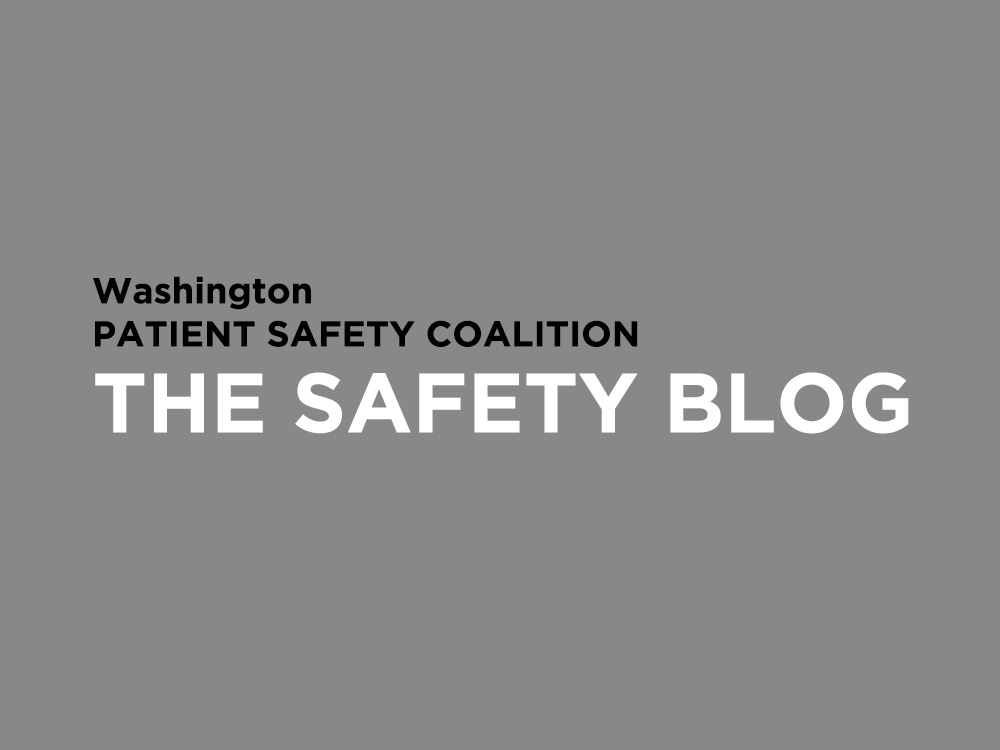- FHCQ Foundation for Health Care Quality
- COAP Care Outcomes Assessment Program
- Spine COAP Care Outcomes Assessment Program
- SCOAP Care Outcomes Assessment Program
- OBCOAP Care Outcomes Assessment Program
- CBDR
- Smooth Transitions
- WPSC Patient Safety Coalition
- Bree Collaborative Bree Collaborative
- Health Equity Health Equity
- Admin Simp
- Contact Us
A Few Thoughts From the 2015 WPSC Conference

A Few Thoughts From the 2015 WPSC Conference
By: Miriam Marcus Smith, WPSC Program Director
The 13th Northwest Patient Safety Conference (May 2015) included several short sessions in the afternoon – we call these “the fast and the furious” because the format for each is a short (10-minute) talk followed by about 10 minutes of discussion at the tables. Participants are assigned to mixed tables – that is, each table has people from different organizations and settings. As organizers, our hope is to provide the opportunity for people to talk with others whom they may not know, and thus have even livelier, productive, and creative (some might say riskier) conversation.
I want to highlight two of the sessions. One was presented by Seattle Children’s about their experience with including patients and family representatives in root cause analyses. Three questions were posed to the attendees: (1) what is your greatest fear about involving families in this work? (2) what is the biggest issue that is keeping you from involving patients and/or families? And (3) what’s one step you are willing to take toward the goal of involving patients and families in RCAs? Attendees discussed the questions and provided written responses, and I derived the themes from the 33 responses. In response to Questions 1 and 2, there were four main themes. Two were what I would call informational or logistic – concerns about privacy, confidentiality, disclosure, and legal issues; and about developing the process, training, and scheduling. To me these seem relatively straightforward – organizations can seek out the information they need, and address logistic challenges; there is information available from other organizations that have done this. Another theme was concern about patients, families, and staff – would they be harmed in some way by this process? Would we frighten patients and families, or cause them more pain? Would their trust be lost? Would staff feel safe? The fourth had to do with organizational leadership: leadership must be on board to increase the likelihood of success. Finally, among the themes of Question 3 (What’s the one step you’ll take toward this goal) the standout was “Start the conversation” – with patients and families, with leadership, with other departments, and with other organizations.
The other session was an overview of the serious adverse events that are reported to the Washington State Department of Health, focusing on a ‘non-zero’ rate of surgical-related events that persists despite significant, ongoing effort by hospitals. The questions put to the attendees were the following: If it were up to you, what would you do differently? What is keeping that from happening? We collected and collated the 30 responses. Similar to the prior session, two themes of Question 1 were ‘mechanical’ or technical: e.g., provide supports such as scribes; and improve the root cause analysis process. Two other themes dealt with communication, culture and leadership. The answers to the second question fell into a single theme: culture. The comments include concerns about lack of organizational commitment and follow-through; push for productivity; and a fear of reprisal and punishment for speaking up.
What do the discussions of these two presentations tell us? First, I am impressed that so many attendees were willing to share their thoughts, opinions, and ideas. These are sensitive topics: involving patients and family members in the processes we use to examine errors can be frightening. Revealing a fear of reprisal at one’s organization – when we are supposed to be ‘past that’ – takes trust and courage. Second, even while there is great concern about both patients and staff, attendees were willing to start those conversations about a challenging topic – involving patients and families in root cause analyses. Third, despite years of effort on eliminating surgical-related errors, ‘technical’ issues persist. Why is this? Have we all implemented the surgical checklist and now treat it like a casual four-way stop intersection, without being truly attentive? Finally, culture and organizational leadership are critical as both facilitator and barrier. Leadership is not a one-time event, a statement in the organization’s mission, or frequent presentations at conferences. It is daily, ongoing work, requiring constant communication up and down the line, truly being there for all staff. It is a process, and it is hard. We know when it is absent or ineffective, and it does affect safety.
The full summaries of both sessions are available on this website in the Selected Past Conference Materials, 2015 (Summaries titled,”Getting to Zero” and “Patients and Families on RCAs”). Would you like to comment on these materials, or submit a guest blog? Please complete a Contact Us form on our website.
Recent Posts
- TakeCharge This Patient Safety Awareness Week: 5 Steps to Safer Healthcare
- Stigma & Bias in Healthcare: The Obstacles, Consequences and Changes Needed
- Agility in Crisis: How The Everett Clinic responded to COVID-19
- Collaboration over Competition: How Pediatric Hospitals Can Thrive When They Work Together
- Reducing Stress for Health Professionals During the COVID-19 Pandemic

